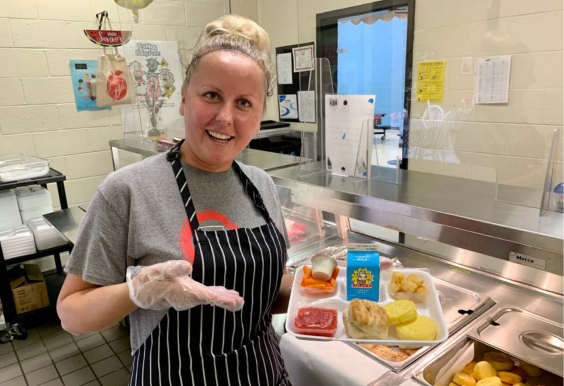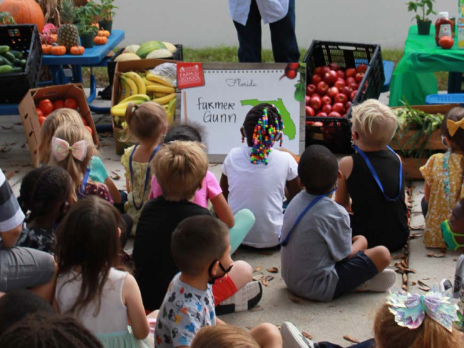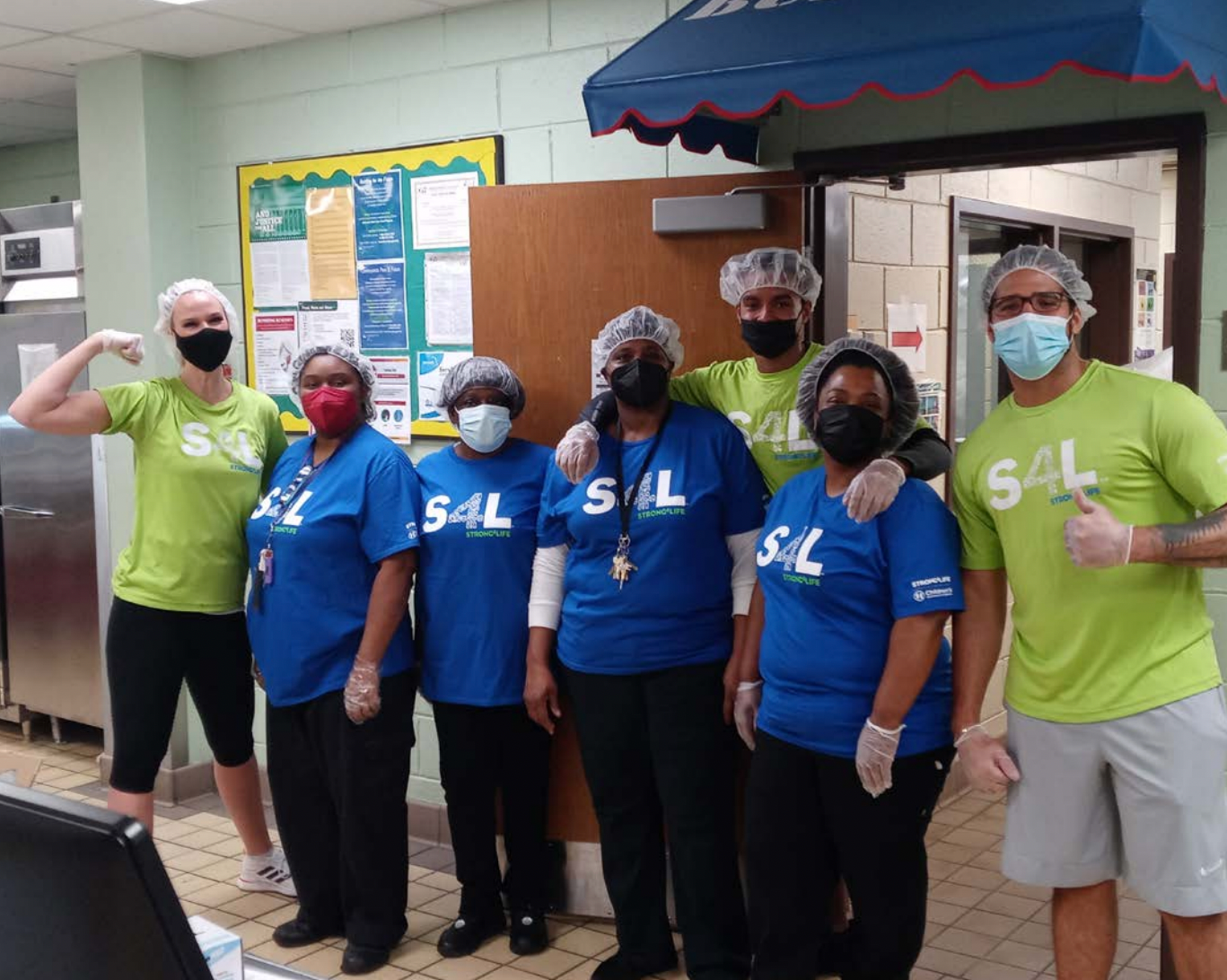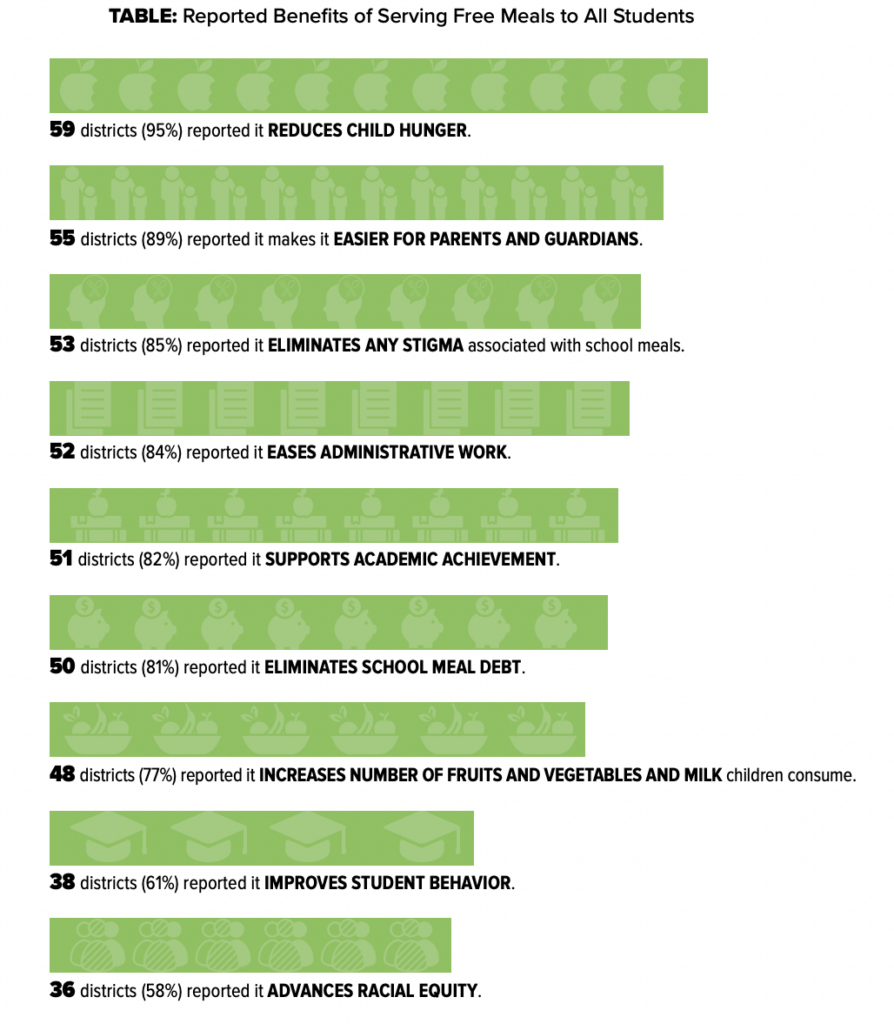Large school districts around the country noted nationwide child nutrition waivers issued by the U.S. Department of Agriculture (USDA) helped reduce child hunger by increasing school meal participation, and played a critical role in supporting school nutrition operations during the 2021–2022 school year, according to FRAC’s latest report, Large School District Report: Operating School Nutrition Programs During the Pandemic.
Key Findings
-
- The 62 districts highlighted in this report included a total of 9,188 schools and 5,334,085 students.
- In October 2021, 50 of the 62 districts (81%) were serving breakfast at all their schools, and 54 of the 62 districts (87%) were serving lunch at all their schools.
- In October 2021 a total of 30,569,003 breakfasts and 55,798,092 lunches were served in the 62 districts surveyed. All of them were served at the free rate through the Seamless Summer Option.


Large School District Report 2022
Read the report
Communications Toolkit
Spread the word!
Press Release
Read the News Release
About Our Survey Sample
The Food Research & Action Center surveyed large school districts to learn more about their school meals programs in April 2021 and October 2021, providing insights into participation and program operations during the 2020–2021 and 2021–2022 school years. For this report, a large district was defined as one with more than 8,000 students. Sixty-two school districts in 31 states completed surveys from December 2021–February 2022. The size of the school districts ranged from 8,204 students in San Marcos Consolidated ISD (TX) to 1,003,199 students in New York City Department of Education (NY).


The Crucial Role of School Nutrition Programs During the Pandemic
As the COVID-19 pandemic continued during the 2020–2021 and 2021–2022 school years, school meals remained a support to students, providing them nutritious food whether they were attending school in person or virtually, and have been a critical component of our nation’s response to the pandemic.
To support access to the federal child nutrition programs during the pandemic, Congress gave the U.S. Department of Agriculture (USDA) the authority to issue nationwide waivers to provide schools, local government agencies, and private nonprofits the flexibility needed to operate the programs during the pandemic. USDA has continued to use this authority to overcome the unique challenges created by the pandemic, such as allowing schools to offer meals to all students at no charge during in-person, virtual, or hybrid learning, student quarantine periods, and school closures and providing additional funding to schools to help cover the increased pandemic-related costs.
Waivers Critical In Meeting COVID Challenges
Even with most students returning to the classroom for the 2021-2022 school year, schools continued to face a variety of challenges, including supply chain disruptions, labor shortages, low participation in school meal programs, serving meals safely, and rising food prices. These waivers have been critical this school year and are needed through the 2022-2023 school year to support school nutrition as they recover from the impacts of the pandemic.
School nutrition staff have served as frontline workers during the pandemic, supporting students access to healthy meals and playing a critical role in combating childhood hunger. They developed creative strategies for dealing with supply chain issues and new serving models to accommodate remote learning and social distancing.
 There are lessons learned from school meal operations during the pandemic and longstanding best practices that can and should be used to increase access and participation in the School Breakfast Program (SBP) and National School Lunch Program (NSLP).
There are lessons learned from school meal operations during the pandemic and longstanding best practices that can and should be used to increase access and participation in the School Breakfast Program (SBP) and National School Lunch Program (NSLP).

School Districts Sound Off on Waivers
- “These waivers have helped Chicago Public Schools (CPS) support our students’ nutritional needs without interruption. During times of food uncertainty, families could rely on CPS to provide meals daily. These waivers also allowed CPS to continue to seek reimbursement for all meals provided, allowing our operation to continue.” – Chicago Public Schools
- “The meal pattern waiver has been immensely helpful this year as we navigate the current supply chain issues.” – Cobb County School District
- “All waivers have eased administrative burdens and allowed us to focus on getting meals to students.” – Cypress-Fairbanks Independent School District
Additional Findings
-
- In April 2021 a total of 22,825,874 breakfasts were served in the 62 districts surveyed.
- 22,821,699 of the breakfasts (99.98%) were served at the free rate.
- 1,243 of the breakfasts (0.01%) were served at the reduced-price rate.
- 2,932 of the breakfasts (0.01%) were served at the paid rate.
- In April 2021 a total of 31,679,077 lunches were served in the 62 districts surveyed.
- 31,543,951 of the lunches (99.57%) were served at the free rate.
- 13,763 of the lunches (0.04%) were served at the reduced-price rate.
- 121,363 of the lunches (0.38%) were served at the paid rate.
- Average daily participation in breakfast increased by over 518,000 across all surveyed districts from 1 million children in April 2021 to 1.5 million in October 2021. Average daily participation in lunch increased by approximately 1.4 million from 1.4 million in April 2021 to 2.8 million in October 2021.
- Broken down by school districts, 52 districts saw an increase in breakfast participation from April 2021 to October 2021, and 61 districts saw an increase in lunch participation from April 2021 to October 2021.
- The combined reach of breakfast among the 62 districts trailed lunch in both April 2021 and October 2021.
- In April 2021 a total of 22,825,874 breakfasts were served in the 62 districts surveyed.

Recommendations
-
- Make free school meals available to all students. Prior to the pandemic, 1 in 3 schools participating in the School Nutrition Programs was offering breakfast and lunch at no charge to all students through the Community Eligibility Provision. Since March 2020, all schools have been given the opportunity to do this through the Seamless Summer Option and Summer Food Service Program. Offering school breakfast and lunch to all students at no charge—also known as Healthy School Meals for All—helps ensure that all children have the nutrition they need to grow and thrive, and helps overcome the numerous participation barriers, such as the tiered eligibility system that limits access for too many children whose families are struggling to make ends meet, and the stigma associated with participating in school meals. It also helps support school nutrition finances by increasing participation, reducing administrative work, and eliminating school meals debt. While the Community Eligibility Provision remains an important opportunity for high-poverty schools to offer free breakfast and lunch to all students, moving forward, bold federal administrative and legislative actions are needed to allow all schools to offer meals to every student at no charge. Healthy School Meals for All can be accomplished by enacting legislation, such as the Universal School Meals Program Act of 2021. A more modest approach is to expand community eligibility so that additional schools are able to offer meals at no charge to all students.
- Extend USDA nationwide waiver authority. At the start of the COVID-19 pandemic, Congress gave USDA the authority to issue nationwide child nutrition waivers to address access and operational challenges created by the pandemic. Without these waivers, the child nutrition programs would not have been able to adequately respond to the fallout from COVID-19. The authority to provide nationwide waivers that increase program costs in response to the pandemic has only been extended to June 30, 2022. Without Congressional action, waivers cannot be provided beyond the 2021–2022 school year. The loss of the waivers means that this summer SFSP and SSO sponsors will be forced to stop serving meals at some sites or shut down all together, limiting children’s access to healthy summer meals. The June 30 expiration also means that USDA will no longer have the ability to respond to supply chain, operational, and access challenges that have been driven by the pandemic, and schools will no longer be able to offer free meals to all students using the SSO waiver when school resumes. Congress should further extend USDA’s nationwide waiver authority through school year 2022–2023 to ensure USDA has continued flexibility to respond to the ongoing and evolving impacts of the pandemic as well as its aftermath.
- Expand direct certification to ensure that more children in need of free meals are automatically linked to them. For example, all states should be allowed to directly certify low-income children who participate in Medicaid for free school meals.
- Support breakfast after the bell models to increase school breakfast participation, which reaches far fewer children than school lunch.
